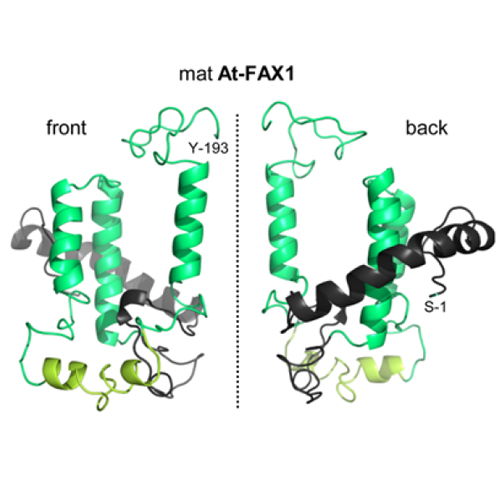FAX1, a Novel Membrane Protein Mediating Plastid Fatty Acid Export
03-Feb-2015
PLOS Biology, 2015, DOI: 10.1371/journal.pbio.1002053, published on 03.02.2015
PLOS Biology, online article
PLOS Biology, online article
Fatty acid synthesis in plants occurs in plastids, and thus, export for subsequent acyl editing and lipid assembly in the cytosol and endoplasmatic reticulum is required. Yet, the transport mechanism for plastid fatty acids still remains enigmatic. We isolated FAX1 (fatty acid export 1), a novel protein, which inserts into the chloroplast inner envelope by α-helical membrane-spanning domains. Detailed phenotypic and ultrastructural analyses of FAX1 mutants in Arabidopsis thaliana showed that FAX1 function is crucial for biomass production, male fertility and synthesis of fatty acid-derived compounds such as lipids, ketone waxes, or pollen cell wall material. Determination of lipid, fatty acid, and wax contents by mass spectrometry revealed that endoplasmatic reticulum (ER)-derived lipids decreased when FAX1 was missing, but levels of several plastid-produced species increased. FAX1 over-expressing lines showed the opposite behavior, including a pronounced increase of triacyglycerol oils in flowers and leaves. Furthermore, the cuticular layer of stems from fax1 knockout lines was specifically reduced in C29 ketone wax compounds. Differential gene expression in FAX1 mutants as determined by DNA microarray analysis confirmed phenotypes and metabolic imbalances. Since in yeast FAX1 could complement for fatty acid transport, we concluded that FAX1 mediates fatty acid export from plastids. In vertebrates, FAX1 relatives are structurally related, mitochondrial membrane proteins of so-far unknown function. Therefore, this protein family might represent a powerful tool not only to increase lipid/biofuel production in plants but also to explore novel transport systems involved in vertebrate fatty acid and lipid metabolism.











